This week, New York’s art scene is buzzing with events. With five major fairs and innumerable openings, the city is alight with a variety of options from the heavy hitting Armory Show to the relatively wallet-friendly Art on Paper Fair. I had the chance to preview the fairs and picked my top two with the most exciting and noteworthy booths—the aforementioned Armory Show and the refreshingly innovative Future Fair.
Choosing from the five fairs—the Armory, Future Fair, Art on Paper, SPRING/BREAK, and Independent—was a feat in and of itself. Unlike the relatively timid Frieze week in May, this week has resembled pre-Covid days in which the social aspect of art-viewing is of equal importance to the art itself. Like Frieze, proof of vaccination is required for entry, with a few venues accepting negative Covid tests as well. Also a departure from Frieze, fair attendees across the board reflected a broader picture of the art world with local and visiting professionals, as well as a promising increase in visitors from outside the art industry.

The Armory Show; Photo by Annabel Keenan
The star of the week is The Armory Show, which returns after its March 2020 edition barely made it just days before lockdown began. The fair this year takes place in the sprawling Javits Convention Center, a space that operated as a mass vaccination site up until two months ago.
A personal favorite was HOUSING’s presentation of works by Allana Clarke and Nathaniel Oliver, a display that earned the gallery the Armory’s Gramercy International Prize and drew large crowds eager to view the artists’ works. The centerpiece of the booth was Clarke’s large, undulating wall sculpture made of hair bonding glue, a medium she uses to address the experience of being Black in a society dictated by white standards of beauty.
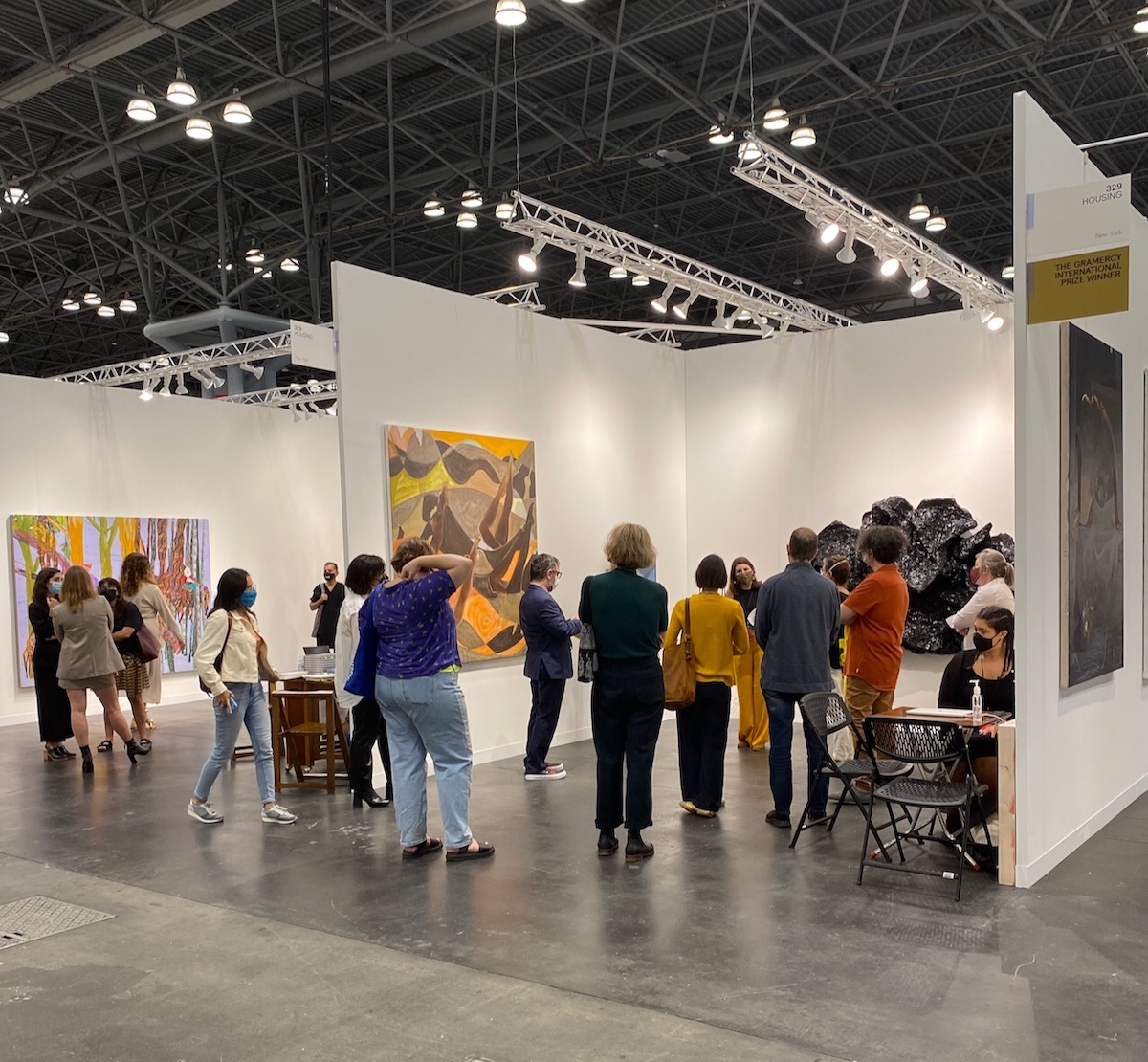
HOUSING Gallery’s booth drawing major crowds at The Armory Show; Photo by Annabel Keenan
Another Armory favorite was Marianne Boesky Gallery’s booth shared with Library Street Collective, in particular the works by Allison Janae Hamilton, a climate activist and member of Artists Commit, a group working to hold the art world accountable for its role in the climate crisis. Born in Kentucky and raised in Florida, Hamilton addresses personal and shared narratives of the American South in relation to the lived realities, in particular the social and environmental injustices experienced by Black communities. Her works include a $35 climate conscious contribution, a small fee that is part of Boesky’s expanding commitment to sustainability.
Other noteworthy displays include Peter Blake Gallery’s booth dedicated entirely to Lita Albuquerque, Marc Strauss’ presentation of “Skywalker/Skyscraper” works by Marie Watt, and The Hole’s colorful spread including Eric Shaw, Adam Parker Smith and Pedro Pedro.
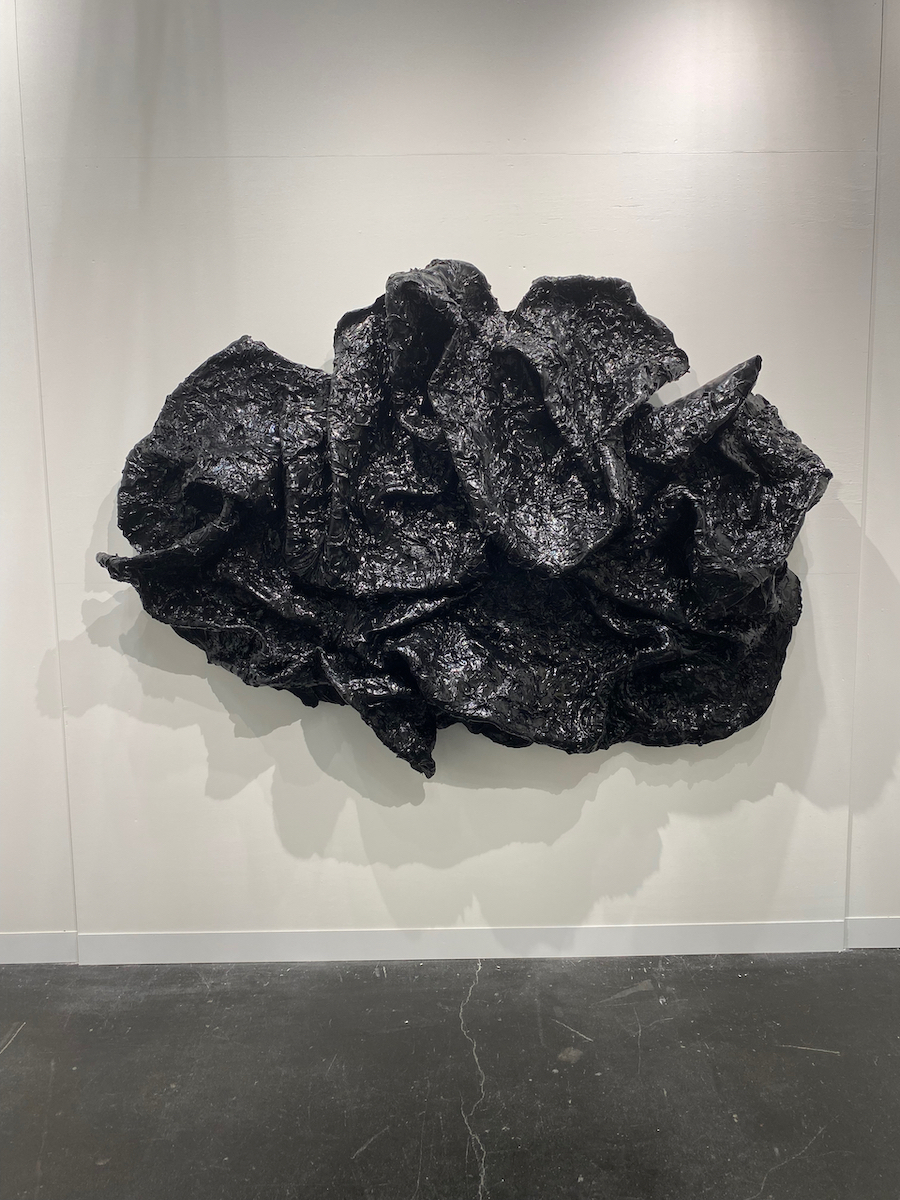
Allana Clarke, Of Radial Love, 2021, hair bonding glue (rubber latex, black carbon dye), HOUSING; Photo by Annabel Keenan
A few blocks south of The Armory Show is the Future Fair with its first in-person edition after the inaugural fair was held virtually due to the pandemic. An equitable model, Future Fair views galleries as shareholders, splitting 35% of profits with founding galleries for the first five years.
Located in the landmark art deco Starrett-Lehigh Building, the fair features 34 exhibitors in 16 bespoke booths with several exhibitors collaborating on shared, curated spaces. A noteworthy and commendable feature of Future Fair is its commitment to diversity and inclusion. More than 25% of the exhibitors are BIPOC-owned, 50% are women-owned, and seven are brand new galleries that opened during the pandemic. Several galleries offered to contribute more than their participation fees to support smaller and emerging exhibitors.
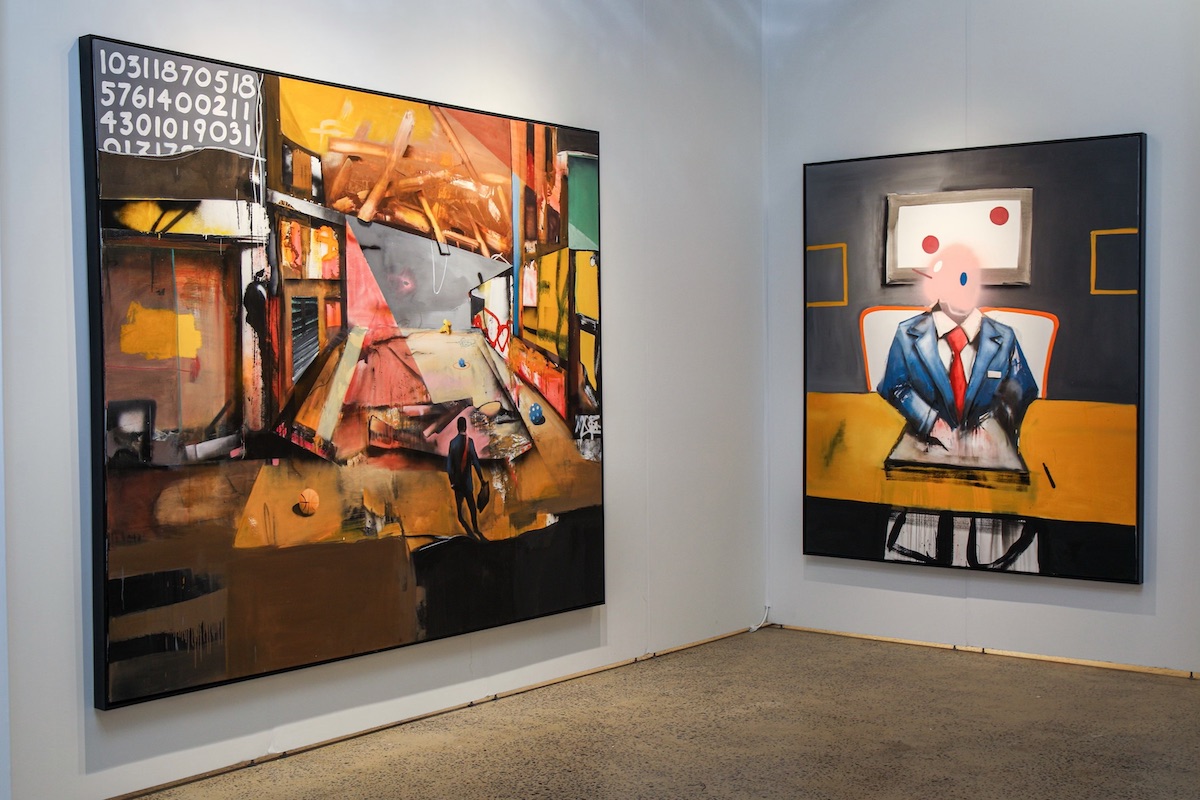
Richard Beavers Gallery and Ilèkùn Wa’s booth at Future Fair featuring Marcus Jensen; Courtesy Richard Beavers Gallery. Photo credit: Keenon Perry.
Future Fair galleries across the board brought a rich, diverse selection of artworks from many names that were new to me. My personal favorite was a presentation of paintings by Marcus Jansen curated by Brooklyn-based Richard Beavers Gallery and Ilèkùn Wa. I was caught off guard by the large, somewhat eerie paintings of faceless businessmen and scenes that seemed to defy logic. The paintings reminded me immediately of German expressionism, Surrealism, and the monumental works of Neo Rauch. Beavers explained that Bronx-born Jansen lived for a period in Germany and his work is a commentary on powers of structure and gentrification with the faceless figures representing developers who force out entire communities.
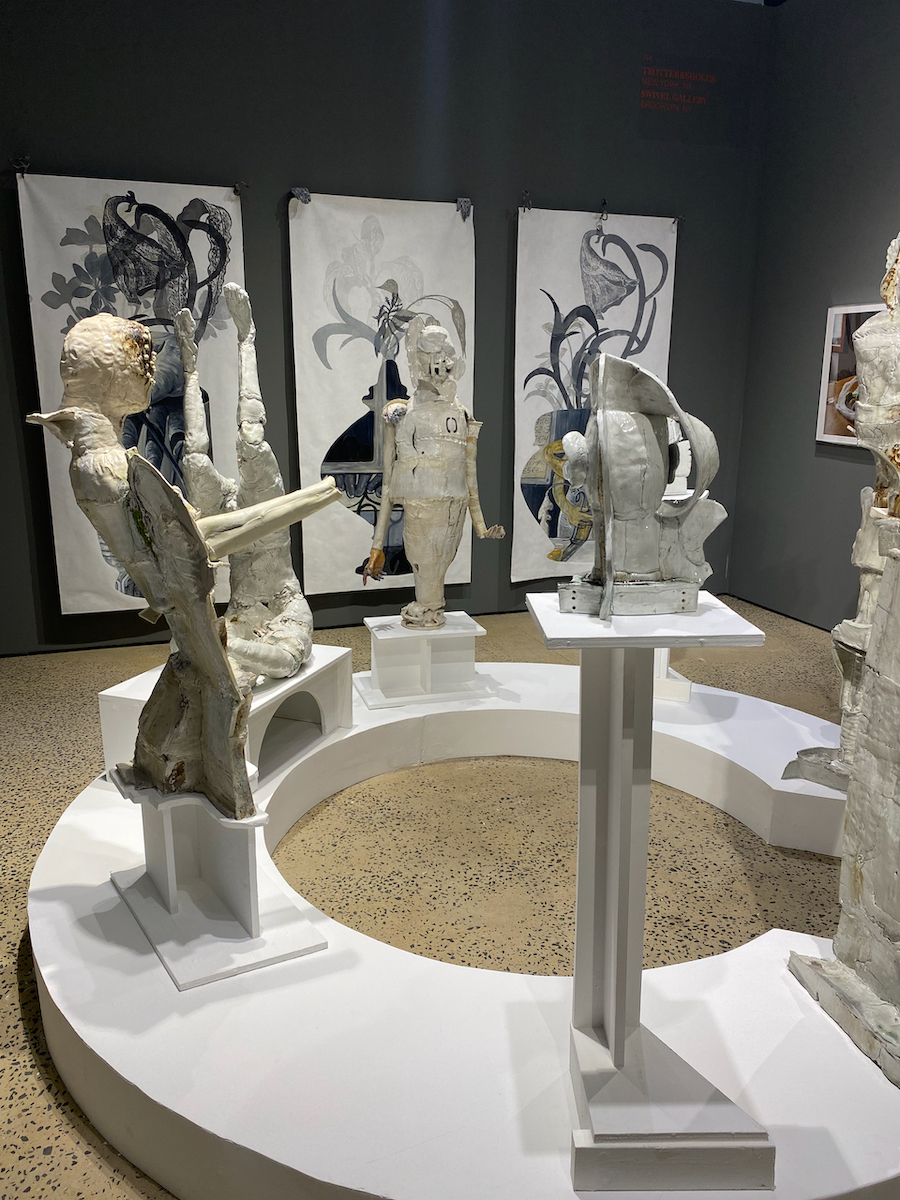
Trotter&Sholer and Swivel Gallery’s booth at Future Fair; Photo by Annabel Keenan
Another favorite booth was from New York-based Trotter&Sholer and Swivel Gallery, both brand new galleries showing for the first time at a fair. The team presented a rich selection of works, including figural, fragmented sculptures by Derek Weisberg and textured, mixed media paintings by Pajtim Osmanaj, all displayed neatly into a well-designed, exhibition-like space. Born in Kosovo, Osmanaj often depicts other-worldly landscapes with symbols of his childhood hidden behind a curtain. Making their fair debut even more exciting, Trotter&Sholer also celebrates their one-year anniversary this week.
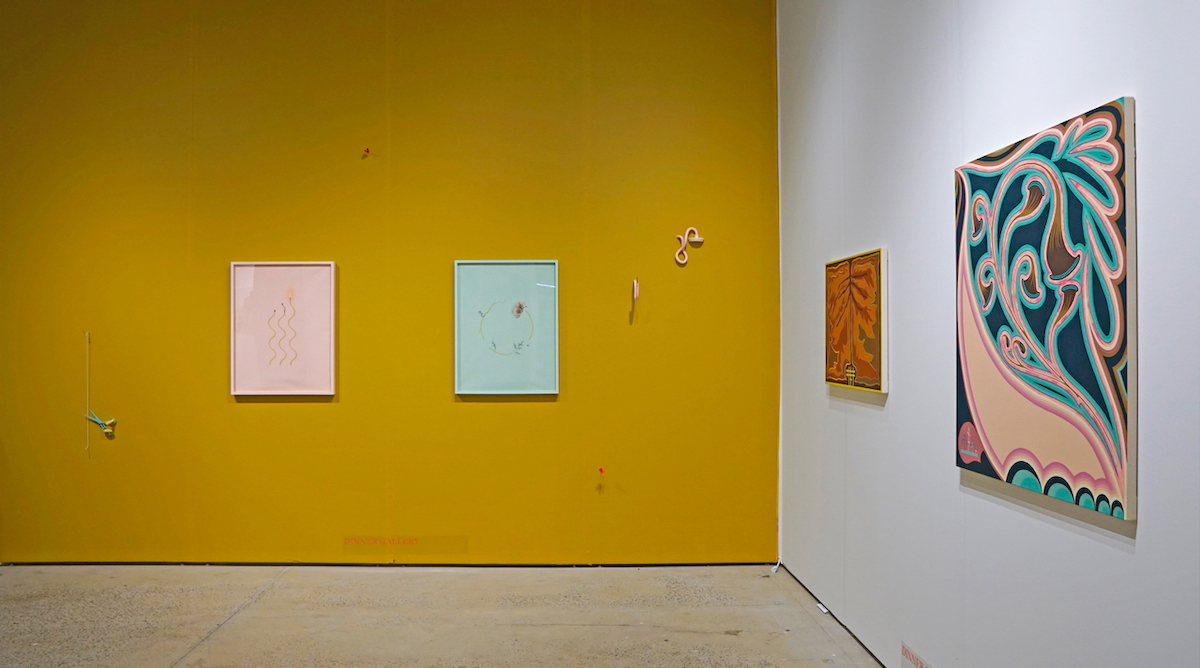
Dinner Gallery’s booth at Future Fair; Courtesy Dinner Gallery
Nearby, Dinner Gallery put together my final top three presentation with a minimal, yet remarkably impactful display. Successfully avoiding the temptation to jam-pack their booth, Dinner Gallery presented a small selection of works by Langdon Graves and Amie Cunat. Graves’ pink and green drawings with matching frames were displayed on a rich ochre wall. Installed near the drawings were slightly eerie sculptures including a candle that weaves in and out of the wall and fingers peeking out of nowhere and holding a pair of scissors about to cut a string. The entire wall came together like a creepy, yet oddly appealing, fairytale.
With so many different fairs and openings to choose from, there is truly bound to be something for everyone on display this week. While the success of an art fair is often measured in sales, from a visitor’s standpoint, the first few days of New York’s art fair marathon have been exciting, inspiring, and shockingly reminiscent of a pre-Covid world.


